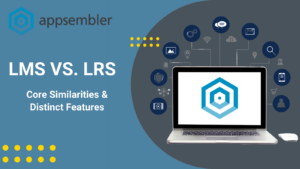Investing in training: for many workers, it’s an ongoing challenge to convince their bosses that it’s a positive investment with a great return, rather than just a cost center. The reality, however, is that increased training opportunities can create substantial opportunities for the business as a whole. Not only does offering training increase the odds that your business will be able to keep competent employees, but it also increases the capability of existing employees, allowing them to take on new tasks and challenges and better manage the company’s position within the industry.
Whether you have an existing training program and need to prove that it’s working or you’re struggling to convince your boss that training has financial benefits, consider these strategies for proving your training ROI.
The Kirkpatrick Model
One excellent method for calculating the return on your training investment uses the Kirkpatrick Model, which was developed in the 1950’s. This model is still used to evaluate training effectiveness across many platforms today, from in-person training sessions to online training software.
Step One: Gather Feedback
In the first stage of the Kirkpatrick Model, your business gathers immediate feedback from the individuals who went through the training. If you’re using an online training platform for the first time, for example, this simple stage of the process can help you determine what your learners actually absorbed from the training session and whether they consider it to be effective. You should also seek to find out if course material seemed relevant to each position. What did each student really take away from the session? By understanding how learners viewed the training, you can determine what alterations need to be made in the future–including determining when it’s time to shift to a new training model.
Step Two: Evaluate the Learning
During the evaluation stage, you’ll look into how much each student really learned from the training session. What did they take away? How much learning did they actually absorb? In a poor session, for example, students might have been distracted or might have struggled to take in material, while in a good session, students likely absorbed a high percentage of the relevant information.
Step Three: Observe Genuine Behavior Changes
What alterations did the learner make to their behaviors as a result of the training session? Are they implementing new tools? Remembering new safety precautions? In order to make learning truly effective, learners must make changes based on what they have learned.
Step Four: Check the Impact
In the final stage of the Kirkpatrick Model, you’ll observe the impact that training has on your business as a whole. How much productivity was gained as a result of the training? What changes were made throughout the company to increase efficiency? Are you seeing an increase in overall productivity and accomplishment?
Comparing the cost of your training to the increases made throughout these levels thanks to the training employees have received can help you calculate your training ROI. Over time, you may continue to see increases in productivity as more employees go through more training–and as a result, the return on your investment will continue to increase.
Asking the Right Questions
In order to show the return on your training investment, it’s critical that you ask the right questions. There are several different layers of questions that can help identify the effectiveness of training sessions, especially online training sessions. Consider:
Did employees absorb the information they were intended to absorb?
You might need to ask simple questions to check comprehension and understanding. If employees consistently fail to understand the information presented, it might be time to reconsider your training model.
Were employees engaged?
Employees who are engaged in a training session are more likely to take action based on what they’ve learned. Measure their demonstrated engagement throughout training sessions, especially online sessions. You may find that audience response tells you a great deal about how much attention your employees are paying.
Are employees making changes to processes and thinking based on what they’ve learned?
One great way to establish this is by asking questions with more than one correct answer, then asking them to look for the best one. In many cases, this will offer you a better picture of how your training reached employees and what they took away from it.
Are you ready to start offering better training to your employees? Contact us today to learn more about how our online training options can transform your training and offer a higher return on your investment.



